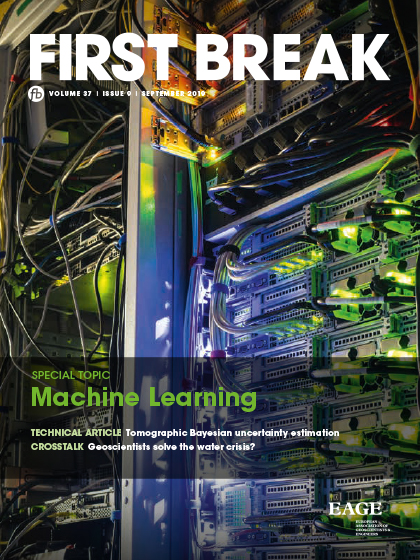-
oa Net reservoir discrimination through multi-attribute analysis at single sample scale
- Source: First Break, Volume 37, Issue 9, Sep 2019, p. 77 - 86
-
- 01 Sep 2019
Abstract
Self-Organizing Map (SOM) is an unsupervised neural network — a form of machine learning — that has been used in multi-attribute seismic analysis to extract more information from the seismic response than would be practical using only single attributes. The most common use is in automated facies mapping. It is expected that every neuron or group of neurons can be associated with a single depositional environment, the reservoir’s lateral and vertical extension, porosity changes or fluid content (Marroquín et al., 2009). Of course, the SOM results must be calibrated with available well logs. In this paper, the authors generated petrophysical labels to apply statistical validation techniques between well logs and SOM results. Based on the application of PCA to a larger set of attributes, a smaller, distilled set of attributes were classified using the SOM process to identify lithological changes in the reservoir (Roden et al., 2015).



